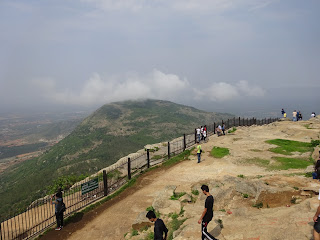Coloured American, Colson Whitehead,
has written a book “Underground Railroad,” which won Pulitzer Prize for fiction
in 2017. This made me eager to read the book, so I bought a copy and started to
read it. It is the story of a Negro girl named Cora, a third-generation slave
in the cotton plantation in the south America, Georgia, in the 19th century,
pre-Civil War times.
Cora’s grandmother was kidnapped and
sold to the plantations; the whole family was sold, and she was bought for $ 226
and sold and resold many times in the next few years. Slaves of breeding age were
in demand, with the hope they will squeeze out children like pups, for ‘money
bred money.’ Finally, she landed in Georgia.
She took husbands three times, only
to lose them all to resale, cholera and death. Of the five children she bore, all
except one girl, Mabel, died. Mabel escaped from the plantation and disappeared
without a trace, leaving her daughter Cora at the age of eleven, an orphan,
rather a ‘stray,’ like a dog on the street.
The story is about Cora, who defends
her small patch, where she grew yams and okra, like her mother, the only
property she ever owned. Girls were raped, violated on their marriage night by
the master, and whipped to take away any trace of rebellion. The sadist owners
invented every day new ways of punishing the slaves.
A slave is the property of her master
who purchased her/him. There is no escape, for even a runaway slave, when caught
had to be returned to the master as per the then prevailing rules of the States.
Slave catchers were turned on these runaway slaves, until they were caught.
One such slave escaped, was caught
and returned to his master in the plantation Cora worked. He was doused with
oil and roasted alive in the full view of the white owner and his guests and
visitors, who had their supper watching the free show in the front lawn. The
victim’s mouth was sewn to stifle the screams.
Another inmate Caesar, invites Cora
to escape with him. They escape and reach the underground railroad, a subway system
that ran throughout the South that transported runaway slaves to the north,
which was free. Though imaginary, there did exist a network of secret routes
and safe houses that evolved in the 19th century America.
Their first stop takes them to South
Carolina. Government owned the former slaves and rehabilitated them in decent
works, provided them with medical care and communal housing. Cora and Caesar
thought they had found a safe haven and stayed there for two years. She even
worked as a live exhibit of a Negro slave in the Museum of Natural Wonders in
S. Carolina.
Soon they found out that the
government was preparing a state-solution for the problem of Negro race in
America, by sterilizing the black women and using the male Negroes as subjects
in their experiment to track the spread of syphilis. Moreover Ridgeway, the
slave-catcher was after them and soon caught up with them at South Carolina.
In the melee of escape, Caesar got
killed and she runs off to the underground station alone. Her trip brings her
to North Carolina this time. Martin, the son of the station’s former operator,
takes her home and hides her in the attic, where she stayed for several months.
Through a small hole in the wall,
Cora watched the goings on of the nearby park. The servant of the house tells
on the owner and raiders along with Ridgeway come home and take her, while her
protectors were harassed and hanged. She was being taken to Georgia, via
Tennessee, where a black-freed slave, Royal, notices her and with his gang
attacks the slave-catcher and frees Cora.
They move to Indiana to a farm owned
by a free black man, Valentine farm, and try to settle in. Soon word spread that
the farm is harbouring runaway slaves and the White Indiana folks attack and
burn down the farm. Many died, including Royal.
Ridgeway recaptures Cora, but insists
that she shows him the underground rail station. She takes him, but kicks him
down the stairs and escapes. She finds a cavern travelling West, and was given
a ride by a coloured driver. There the story ends.
The book shows the reality of the brutal
slave system and the travails of the slaves in the 19th century. The
author has researched well, especially by going through the narratives of the
old slaves, who were still living in 1930s, when the government chronicled
them.
He had taken 16 years to mull through
the subject before writing it down, a story which very well could have been his
own ancestors’. A sad commentary on American ideals of freedom, liberty and
fraternity, the values extended only to a Whiteman, but denied to the Black.
America was founded on Christian
values, but sadly these were missing in their treatment of the black man, who
were also created by God in His image. They were treated as animals with no
rights of their own. And the Whites felt that it was their right to own not only
the land, but also enslave others, a God-given right.
The author through the words of a character
in Valentine farm states that, “This nation (America) shouldn’t exist, if there
is any justice in the world, for its foundations are murder, theft, and cruelty.
Yet here we are.” Just the opposite of what America professes.
But maybe, America is also the only nation
that went to war against its own people to abolish slavery.
It is a paradox.


























